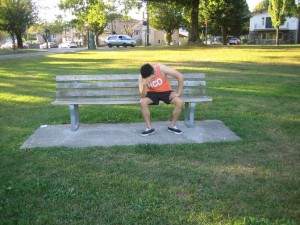Cervicogenic headaches are those that start off at the neck exactly at the bottom of the skull at the upper part of the spine. The headaches start out occasionally in the primary stages and eventually become continuous.
It is usually due to stress, fatigue, difficulty in sleeping, poor posture, back and neck injuries and disc injuries. The headaches are triggered by sudden movements of the neck, dizziness and blurred vision. The episode can last for one hour up to a week. A cervicogenic headache is a secondary headache and caused by another illness or physical problems.
Symptoms of cervicogenic headaches

- Headache that can be felt on the same side of the neck. Headaches felt on the occipital area or back of the head can spread to the forehead or temples. Pain differs from person to person.
- Limited movement of the cervical spine or stiffness of the neck.
- Tenderness in the base of the neck
- The pain can spread to the arms and shoulder on the same side of the headache.
- Sensitivity to light and sound
- Nausea and vomiting
- Pain in the head when coughing, sneezing or taking a deep breath
- Pain that stays in one area such as front, back, side of the head or on the eye
Causes
- Cervical osteoarthritis which is joint degeneration in the cervical spine
- Trauma to the spine such as whiplash and other neck-related injuries
- Growth of tumors in the spine
- Chronic postural strain due to poor working and sleeping positions
- Frequent downward position of the head such as reading with the head in a downward position
- Inflammatory conditions in the neck
- Conditions such as diabetes and vasculitis
Treatment
- While sitting and standing, maintain proper posture to prevent pressure placed on the spine and lessen the cervicogenic headaches. Place a pillow or a rolled towel at the back while sitting and make sure the hips are pressed firmly on the back of the chair to lessen the pressure placed on the spine while sitting.
- Apply heat on the affected area. Heat can be in the form of a hot compress to relax the aching muscles and lessen the pain.
- Perform simple exercises such as simple walking to strengthen the back and lessen the headaches for at least 20-30 minutes every day.
- Take the prescribed over-the-counter non-steroidal anti-inflammatory drugs (NSAIDs) such as ibuprofen and paracetamol to lessen the pain and the fever.
- Seek the help of a physical therapist for some exercises to relieve the cervicogenic headaches.
- Perform relaxation techniques such as yoga and deep breathing to lessen the pain and relax the muscles.
